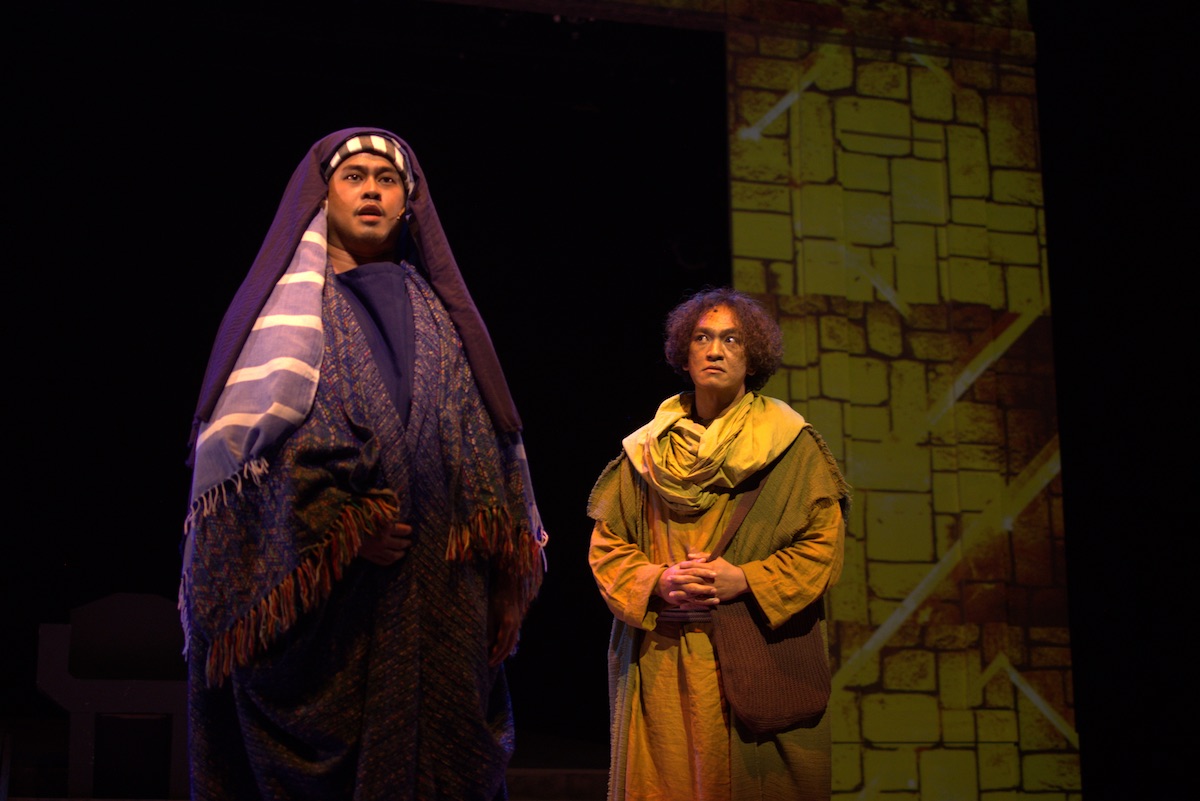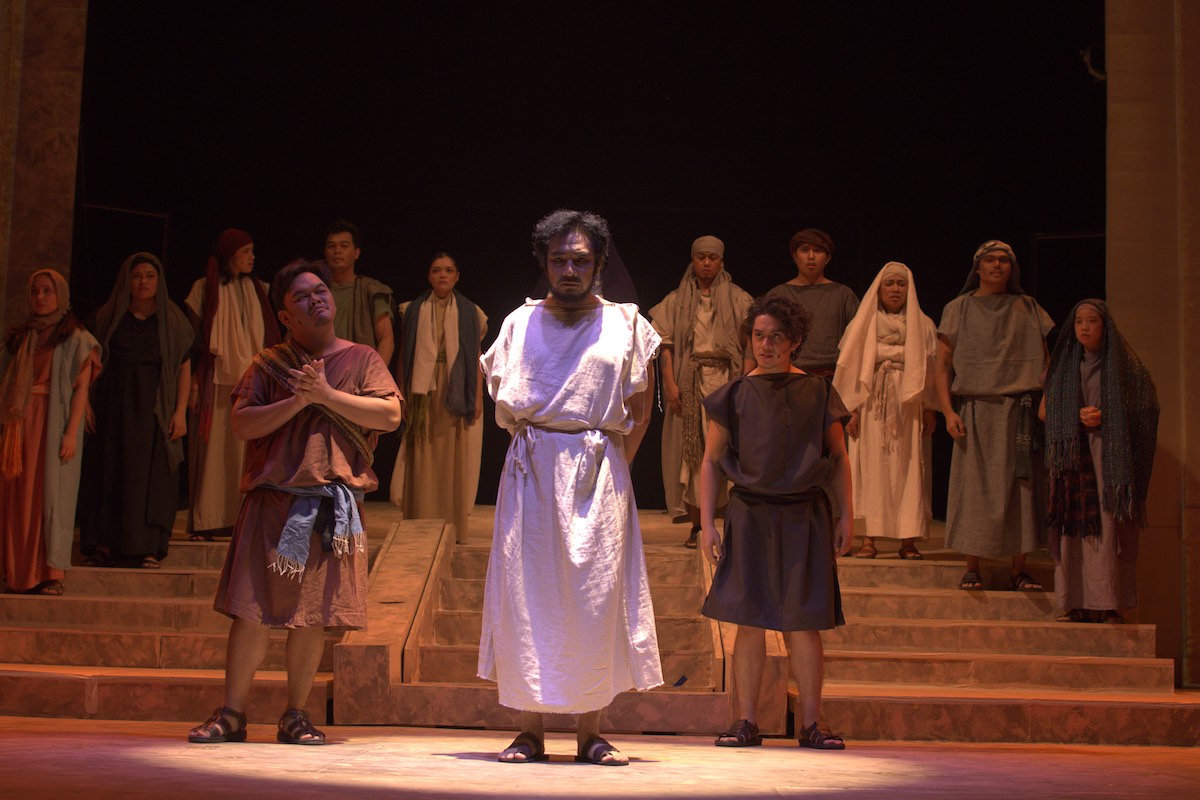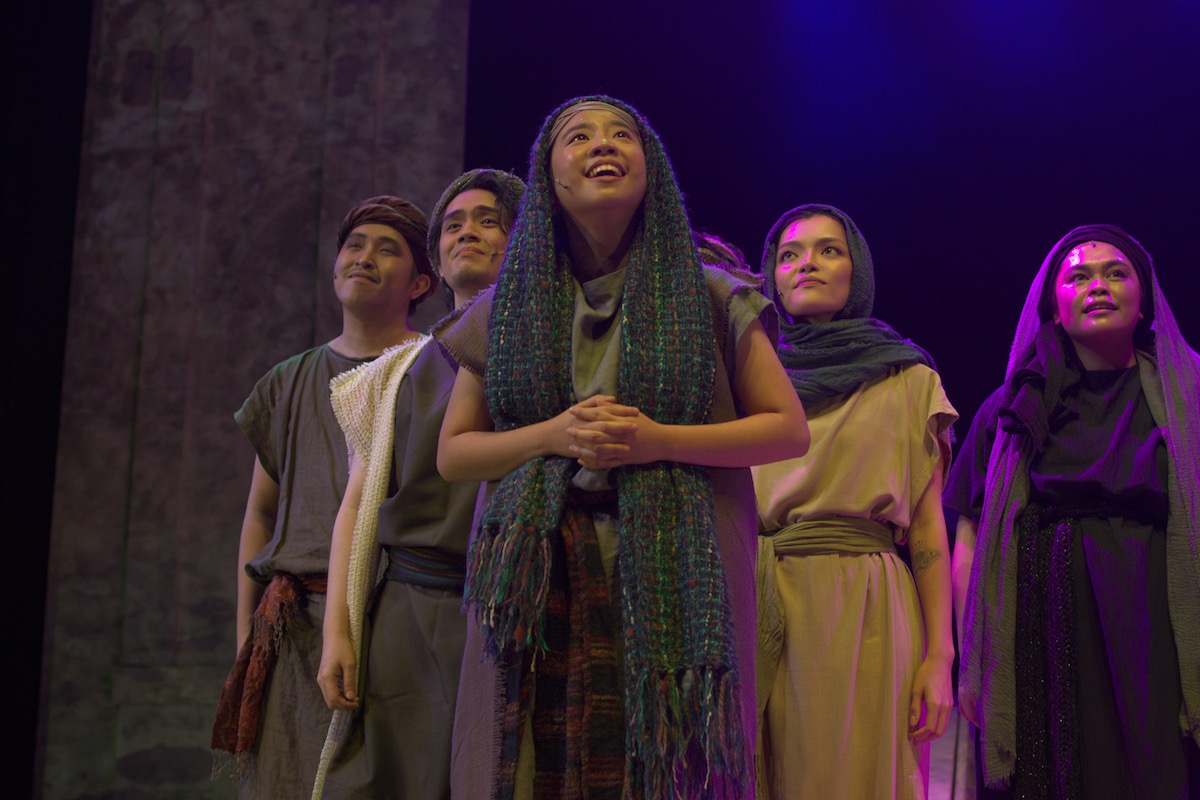Rare is the creature that makes me ask myself the immortal question posed by Lai and Sigman, “Where Do I Begin?”. I suppose a disclaimer would be as good a place as any. I am a staunch supporter of new, locally developed and produced material. Any kind of step taken to build upon the country’s dramatic culture should be welcomed and celebrated. The entire raison d’être of theatre criticism is to provide valuable scholarly feedback to help push the industry forward. This feedback therefore comes from a place of great love for the art form. It is thus very difficult for this particular critic to say: Pilato the Musical, in its current form, is not ready for any audience, in any way.
As with any examination into a dramatic piece, we start with the “What”. Pilato the Musical is an original Filipino Musical in Filipino, written and directed by Eldrin Veloso. With music by Yanni Robeniol and Musical Direction by Pauline Arejola, Pilato the Musical is sung through in two acts. It chronicles the life of the titular character Pontius Pilate (Jerome Ferguson), from the time he assumed the governorship of Roman-occupied Judea, to his infamous role in the crucifixion of Jesus Christ (Noel Rayos). It is framed as something of a political commentary, attempting to expand the perspective of the audience by introducing the different viewpoints of Pilate’s wife, Procla (Christy Lagapa), the High Priest Caiaphas (Jeremy Manite), and Pilate’s Jewish scribe Josepo (Onyl Torres) for some unexplained reason, amidst a gaggle of supporting characters.
…replaying it in my head as a serious straight play in the tradition of Harold Pinter, or Arthur Miller, or Floy Quintos.
The play seems to defy the laws of physics. It feels like time bends around the stage making the three-and-a-half hour performance seem like an eternity. The book tries to do too much for naught: The first act is overburdened with story and character threads that lead nowhere. The challenge for authors who write for the stage is that there is no room for superfluity because of the inherent limitations of the medium. A play isn’t the same as a ten-episode miniseries, and writers need to pick their battles. We have an entire arc about the inability of Pilate to properly learn about the unique culture of the land he governs, an arc about how his household questions his effectivity as a leader, an arc about the complicated motivations of Caiaphas and his goal to preserve the Jewish way of life for his people, an arc about the imaginary struggles of Procla about her marriage, an arc about how his scribe struggles with his role as the bearer of truth as he records the events as they unfold around him, and a protracted arc about an aqueduct. All very interesting on paper, but it spectacularly falls apart in its execution, especially since Jesus Christ, the character that is supposed to be the catalyst of its climax, tragically, does not get his own arc. It’s like he’s dropped in the middle of the story after being conceptually, physically, and inexplicably absent for the entirety of the first act.
The intention was not lost on the audience. It is a different take on the traditional passion play that is usually centered on Jesus Christ. It shifted its focus to Pilate, who is a fairly minor character in the story of the crucifixion, and build him up as the star. That is a well and oft-used device to breathe new life into old narratives, especially for a story as well-known as the Passion Play. But in order to make that work, you have to place a character of equal or greater import as the force opposite the new main character. In this case, Pilate was placed across Caiaphas: yet another relatively minor character in the original story. If the objective was to humanize, and build sympathy for Pilate and flesh out his motivations, he needs to be positioned as a sympathetic character. This takes thought, and time must be given for it to organically build within the context of the story. Pilate, Caiaphas, Procla, and Josepo are all extremely unlikeable characters: There’s not a single one of them who inspires any measure of empathy, or any kind of human connection with the audience. And the unfortunate thing is, it’s all because you don’t understand why you should care.
While it may be less than brilliant, I do believe that the story deserves to be told.
There is another peculiar thing about this production. One wonders if it’s actually in the wrong format. This musical achieved what I thought previously impossible due to my great love for sung-through musicals. As I sat there in the audience, I found myself translating the musical into a straight play, stripping it of the ridiculous soundtrack and just replaying it in my head as a serious straight play in the tradition of Harold Pinter, or Arthur Miller, or Floy Quintos. It was a bizarre experience, akin to a form of literary disassociation. Needless to say the music that relied excessively on similar leitmotifs did little to redeem the show, and clumsily bombarded the audience with giant musical artillery, bearing the same volume and intensity as the Siege of Normandy. After the show, the music still clung to the recesses of the mind with its derivative, predictable, and deafening repetitiveness.
The long and short of it: It’s a hot mess.
So how does one fix it? It might be prudent for the company to take a long, honest look at what are they trying to achieve. It is necessary to strip away everything that does not serve a singular coherent, thematic, storyline. It often becomes very difficult to look at what obviously took months, even years, to build with any measure of objectivity and critical thought, but that is what is required to ensure that what is put onstage matters. A lot of editing needs to happen to the story, the script, and the music. The show has a very difficult road ahead of it, and it’s clear that a lot of effort was put into its development.
While it may be less than brilliant, I do believe that the story deserves to be told. The Philippines, as a predominantly Catholic country, has a rich history of affection for the Passion Play: evinced by the popularity of films and musicals like Andrew Lloyd Webber’s Jesus Christ Superstar, and the myriad of Passion Plays mounted by churches and cities all over the country during Lent, so there is no shortage of audiences for this property. It is critical that for something as widely-known and venerated a story as the ultimate sacrifice of Christ, you have an obligation, a duty, to get it right. Failing that, you miss the opportunity to do something truly epic.
The Corner Studio’s Pilato The Musical runs from April 4-13, 2025 at the PETA Theater Center. Tickets are still available at pilato.helixpay.ph.
Click here for more stories like this. You may also follow and subscribe to our social media accounts: Facebook, YouTube, Instagram, TikTok, Twitter, and Kumu.

























